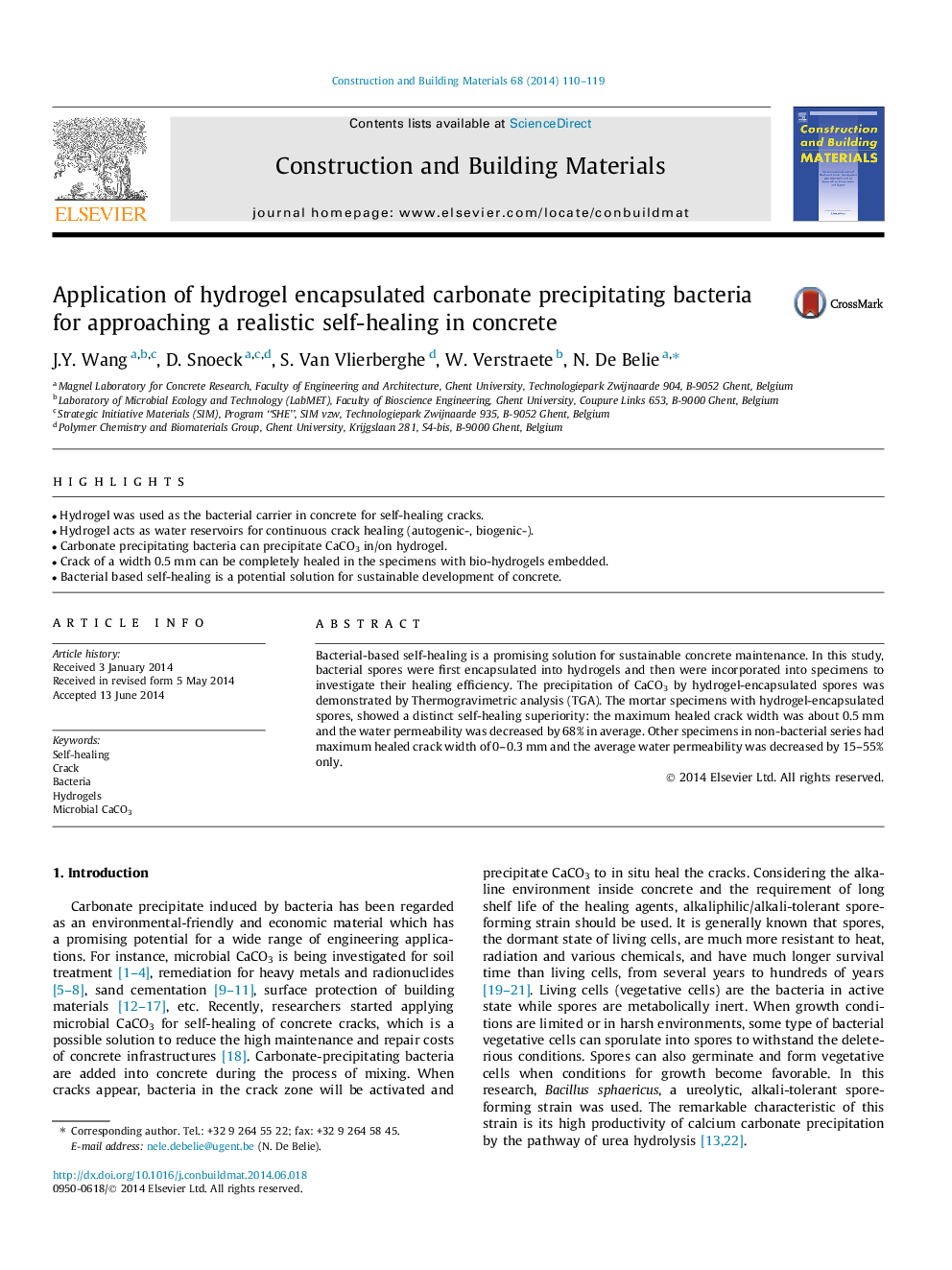| Article ID | Journal | Published Year | Pages | File Type |
|---|---|---|---|---|
| 6722309 | Construction and Building Materials | 2014 | 10 Pages |
Abstract
Bacterial-based self-healing is a promising solution for sustainable concrete maintenance. In this study, bacterial spores were first encapsulated into hydrogels and then were incorporated into specimens to investigate their healing efficiency. The precipitation of CaCO3 by hydrogel-encapsulated spores was demonstrated by Thermogravimetric analysis (TGA). The mortar specimens with hydrogel-encapsulated spores, showed a distinct self-healing superiority: the maximum healed crack width was about 0.5Â mm and the water permeability was decreased by 68% in average. Other specimens in non-bacterial series had maximum healed crack width of 0-0.3Â mm and the average water permeability was decreased by 15-55% only.
Keywords
Related Topics
Physical Sciences and Engineering
Engineering
Civil and Structural Engineering
Authors
J.Y. Wang, D. Snoeck, S. Van Vlierberghe, W. Verstraete, N. De Belie,
